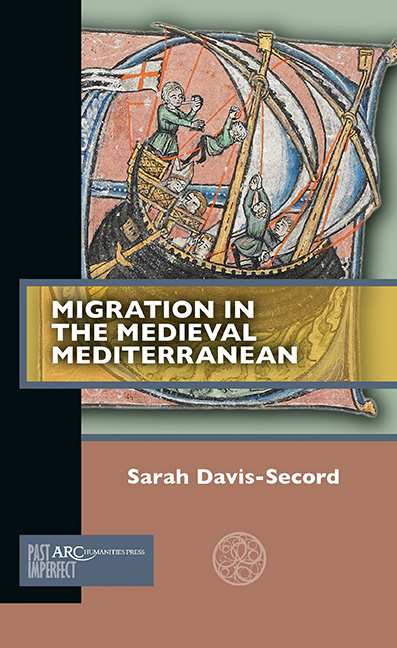Book contents
- Frontmatter
- Contents
- Introduction
- Chapter 1 Refugees from the Islamic Conquests
- Chapter 2 Hadrian and Theodore
- Chapter 3 St. Elias the Younger
- Chapter 4 Constantine the African
- Chapter 5 Jewish Refugees from the Norman Invasion
- Chapter 6 Merchants
- Chapter 7 Imam al-Mazari and Other Muslim Scholars
- Chapter 8 Unnamed Sicilian Girl
- Chapter 9 George of Antioch and Other Immigrants to Sicily
- Chapter 10 Moses Maimonides
- Chapter 11 Religious Converts
- Conclusion
- Further Reading
Chapter 9 - George of Antioch and Other Immigrants to Sicily
Published online by Cambridge University Press: 13 January 2022
- Frontmatter
- Contents
- Introduction
- Chapter 1 Refugees from the Islamic Conquests
- Chapter 2 Hadrian and Theodore
- Chapter 3 St. Elias the Younger
- Chapter 4 Constantine the African
- Chapter 5 Jewish Refugees from the Norman Invasion
- Chapter 6 Merchants
- Chapter 7 Imam al-Mazari and Other Muslim Scholars
- Chapter 8 Unnamed Sicilian Girl
- Chapter 9 George of Antioch and Other Immigrants to Sicily
- Chapter 10 Moses Maimonides
- Chapter 11 Religious Converts
- Conclusion
- Further Reading
Summary
At the same time that Jewish and Muslim residents of Sicily were leaving, or seeking to leave, the Norman Christian island, the Latinate rulers were encouraging immigration of European Christians into their new realm. This typically meant settlement by knightly supporters of the Norman rulers, to whom they granted landed estates and who were attracted by the prospects of land and fortune in this formerly Muslim space. But the Normans also encouraged the migration of Western Christian church officials by establishing a number of Latin rite churches and monasteries. The Latin chroniclers who recorded the events of the Norman conquest and early decades of their rule were, for the most part, also immigrants to the island. Some came from nearby; the Normans likely drew many of their colonial settlers on the island from southern Italy. But others arrived from farther away, many of them from northern France (Normandy) like the Norman conquerors themselves. For example, one important chronicler of the period, Geoffrey Malaterra, claims that he himself came from “a region on the other side of the mountains, having only recently become an Apulian and indeed a Sicilian.” This may mean that he too was from Normandy, but in any event it is certain that he was an immigrant from the north who moved first to mainland Italy and then to Sicily.
Many people who took over estates, bureaucratic posts, and ecclesiastical positions in the process of “Latinizing” the island were Norman allies from Christian Europe—part of an intentional process of increasing the number of the Normans’ loyal supporters on the island. But there does not seem to have been, at least initially, an organized effort to transform the entire ecclesiastical landscape of the island. Geoffrey Malaterra tells us that Count Roger I waited until the majority of the island had been conquered (ca. 1090) before attending to the distribution of ecclesiastical lands in Sicily. He, “lest he seem ungrateful that such benefits had been conferred upon him,” (that is, by the pope) began to build churches and appoint bishops and abbots for Latin monasteries, while also initially allowing Greek monastic communities to maintain their traditions. But he found “the church to be uncultivated, having just been rescued from the jaws of the unbelievers,” and thus in serious need of new leadership.
- Type
- Chapter
- Information
- Migration in the Medieval Mediterranean , pp. 79 - 88Publisher: Amsterdam University PressPrint publication year: 2021



